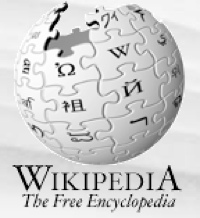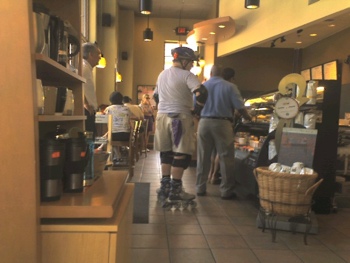 Vicki Davis, that Cool Cat Teacher, wrote a poignant, and classic, blog post yesterday about her son’s experience researching the 9/11 terrorist attack.
Vicki Davis, that Cool Cat Teacher, wrote a poignant, and classic, blog post yesterday about her son’s experience researching the 9/11 terrorist attack.
When my son brought out his report on 9/11 facts, I was again reminded of how important it is to teach digital literacy.
You see, when he typed 9/11 facts — he found a conspiracy theory website(s) and came out of it thinking someone had bombed the building.
Yes, he is in seventh grade, and Yes, I’ve talked so much with him about verifying sources, however, kids so often think if it is “on” Google that it is right.
This is a crucial problem for us in education, equipping our students with the skills to critically evaluate the information that they encounter. It is probably the most frequent complaint that I hear from educators about the Internet, as they try to teach that which their students must learn.
So let me see if I can disappoint some people and come at this from an entirely different direction. What if I suggested that it was our fault.
We teach from textbooks, from reference books, from journals, online databases, and from our own educated expertise. It’s part of our arsenal, as teachers, to help us instill confidence in the sources of that which we are teaching. I’m not saying that textbooks, reference books, and commercial databases are bad, and that we shouldn’t use them. They are enormously valuable. But we’re missing something that’s very important when we rely so exclusively on carefully packaged content and then lament that our students and children rely so readily on Google.
We have to practice what we preach, and we have to practice it out loud!
At the same time that we continue to use our textbooks (or what ever they evolve into), reference works, databases, and our own expertise, we should also bring in, at every opportunity, content and resources that we have found, evaluated, processed, and prepared for teaching and learning, and that we should include conversations about how we found it, evaluated, and processed it. If the are seeing us, every day, asking the questions that are core to being literate today, then perhaps they will not only develop the skills of critical evaluation, but also the habits.
2¢ Worth!
Image Citation:
Bargmann, Monika. “Googling.” Library Mistress’ Photostream. 31 Jan 2006. 12 Sep 2007 <http://flickr.com/photos/library_mistress/93567838/>.

 Periodically, my neighbor,
Periodically, my neighbor, 

 I guess it’s a bit presumptuous to put the word, conversation, in the title of this blog. It is impossible for me to predict which posts are going to generate conversations and which aren’t. Perhaps if I’d included the word, rant, it would stand a better chance. Perhaps, Wikipedia, guarantees it.
I guess it’s a bit presumptuous to put the word, conversation, in the title of this blog. It is impossible for me to predict which posts are going to generate conversations and which aren’t. Perhaps if I’d included the word, rant, it would stand a better chance. Perhaps, Wikipedia, guarantees it. Brenda and I have been watching episodes of
Brenda and I have been watching episodes of  The other day I ran across some notes I took at a workshop I attended when I worked for the NC State Department of Public Instruction. I do not recall the name of the workshop, but it was about writing successful reports and memos. The concepts were research-based (writing that people understand more fully and more quickly) and pertained to how information is arranged on paper — producing messages that it communicate themselves more effectively. I used many of these concepts when I use to present sessions and teach workshop on web design.
The other day I ran across some notes I took at a workshop I attended when I worked for the NC State Department of Public Instruction. I do not recall the name of the workshop, but it was about writing successful reports and memos. The concepts were research-based (writing that people understand more fully and more quickly) and pertained to how information is arranged on paper — producing messages that it communicate themselves more effectively. I used many of these concepts when I use to present sessions and teach workshop on web design. The stupidest thing I ever did was to buy some rollerblades the day I turned 40. Completely cured me of any and all mid-life crises I might have harbored during the next decade and a half. That pavement comes up a lot faster now than it did when I was 18, and no matter where I was wearing pads, it wasn’t what hit the pavement first.
The stupidest thing I ever did was to buy some rollerblades the day I turned 40. Completely cured me of any and all mid-life crises I might have harbored during the next decade and a half. That pavement comes up a lot faster now than it did when I was 18, and no matter where I was wearing pads, it wasn’t what hit the pavement first. It’s something that we have to figure out, as adults, and figure out how to help our students to learn. Information today is property and we want to protect our property, whether its a book, from which we draw income, or an idea that we’ve invested ourselves in. Information is also a tool, and a hammer can be swung at things other than nails.
It’s something that we have to figure out, as adults, and figure out how to help our students to learn. Information today is property and we want to protect our property, whether its a book, from which we draw income, or an idea that we’ve invested ourselves in. Information is also a tool, and a hammer can be swung at things other than nails.